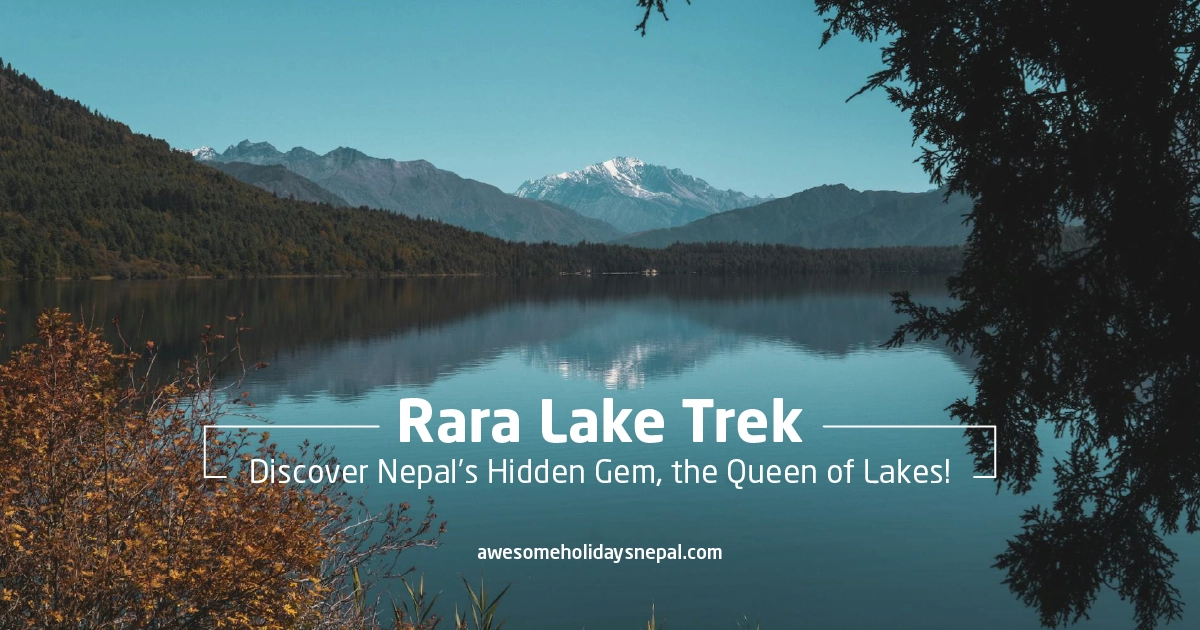Wildlife Reserves in Nepal
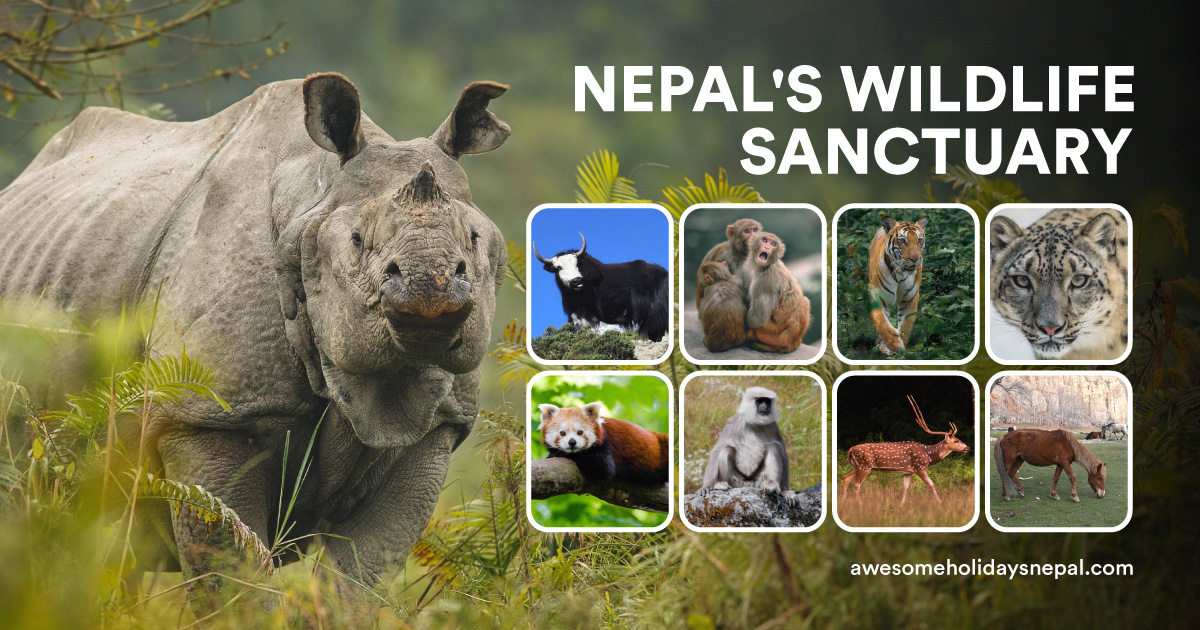
Nepal’s wildlife reserves are as diverse as its geography and people. With its diverse geography and rich biodiversity, the country has various protected areas, including national parks, conservation areas, hunting reserves, and wildlife reserves.
Such reserves are crucial in preserving endangered species, maintaining ecological balance, and promoting wildlife research. Over time, some of these reserves have been upgraded to national parks due to their growing ecological significance and conservation needs.
Let’s explore the sanctuary further to protect the unique, rare, and diverse biodiversity in Nepal’s varied vegetation.
Biodiversity and Wildlife Reserves in Nepal
Nepal boasts an incredible variety of flora and fauna, ranging from tropical forests in the Terai lowlands to alpine meadows in the Himalayan region. This biodiversity is due to the country’s varying altitudes, climate zones, and distinct ecological areas.
Nepal’s national parks, conservation areas, and wildlife reserves are established to safeguard rare species such as the Bengal tiger, one-horned rhinoceros, snow leopard, red panda, wild elephants, and the endangered Ganges river dolphin.
Role of Wildlife Reserves in Nepal
Wildlife reserves in Nepal are essential for preserving the country’s biodiversity, protecting endangered species, and promoting sustainable tourism. Wildlife reserves serve several crucial functions, including:
- Conservation of endangered species like wild water buffalo (Arna), swamp deer, and migratory birds.
- Providing a base for scientific research in ecological studies and wildlife research.
- Attracting ecotourism, which supports local communities.
- Climate regulation and preserving ecosystems that help combat climate change and habitat conservation of wild species.
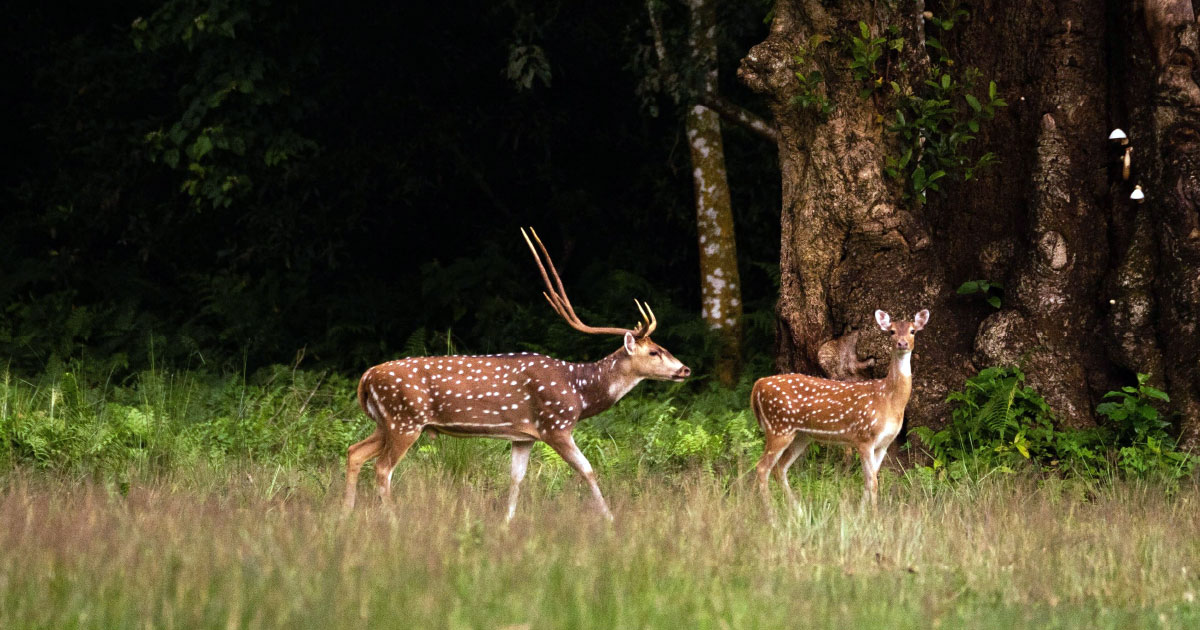
How Many Wildlife Reserves in Nepal?
The wildlife policy of Nepal aims to conserve forest ecosystems, wildlife habitats, and genetic resources by establishing national parks, wildlife reserves, gene banks, zoos, and botanical gardens. Initially, Nepal had three wildlife reserves.
But now two wildlife reserves have been promoted into national parks to enhance conservation efforts, improve tourism potential, and ensure better management of biodiversity. The upgrade provides stronger legal protection, greater funding, and sustainable development opportunities.
Currently, Koshi Tappu Wildlife Reserve remains Nepal’s only designated wildlife reserve, while the other Shuklaphanta Wildlife Reserve is called Shuklaphanta National Park, and Parsa Wildlife Reserve has been upgraded to a National Park.
Upgraded Wildlife Reserves: Transition to National Parks
Over time, some wildlife reserves have received national park status due to their growing significance in conservation efforts. Nepal has upgraded several wildlife reserves to national parks to enhance biodiversity conservation, strengthen legal protection, and promote sustainable tourism.
National parks receive better funding, stricter conservation laws, and improved management compared to wildlife reserves. This transition helps protect endangered species like Bengal tigers and one-horned rhinoceroses while also boosting ecotourism, which supports local communities economically.
Additionally, national parks allow visitors to visit the park, which ultimately promotes tourism. Jungle safaris, canoeing, and walking tours are various programs offered by national parks ensuring sustainable tourism practices.
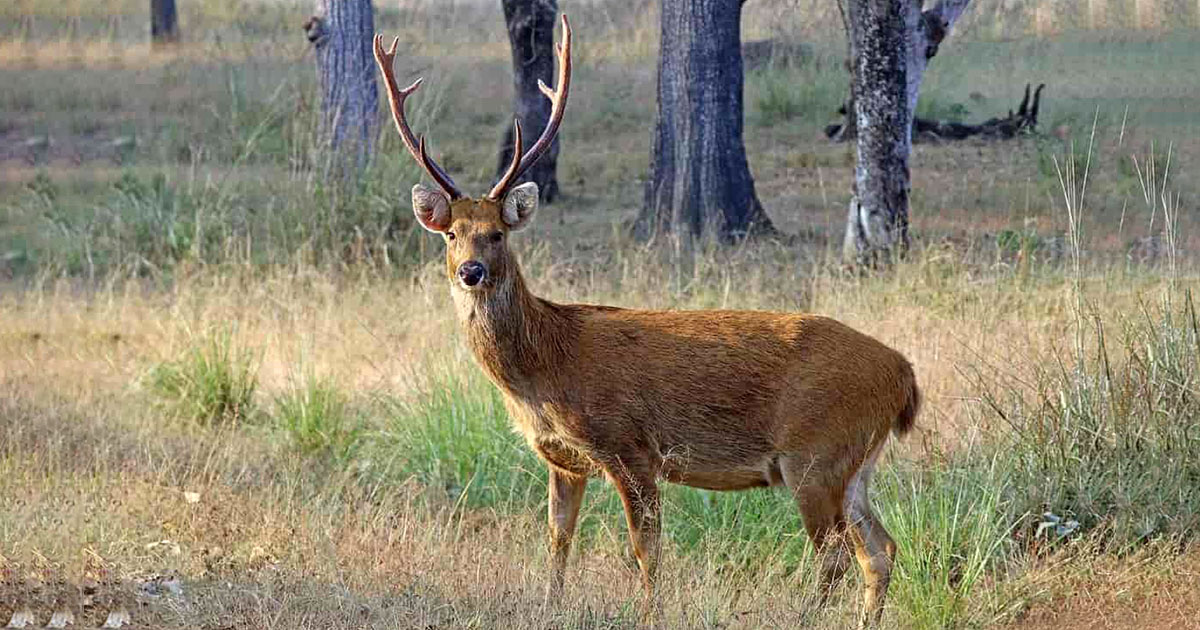
Shuklaphanta National Park
Shuklaphanta National Park, located in the Sudurpashchim Province (far western region) of Nepal, is a protected area known for its vast grasslands, rich biodiversity, and large population of swamp deer (barasingha).
Initially established as a royal hunting reserve in 1969. It was later promoted to a wildlife reserve to protect Nepal’s last remaining herd of swamp deer (Cervus duvaucelii) in 1976 and finally gazetted as a national park in 2017 to enhance conservation efforts.
The Shuklaphanta National Park covers an area of 305 sq. km, bordered by the Mahakali River to the west and India’s Dudhwa National Park, forming a crucial transboundary wildlife corridor.
The park covers 305 sq. km. and is home to Nepal’s largest grassland, known as Shuklaphanta, meaning plain grassland. The park is famous for hosting the largest herd of swamp deer in the world, especially during winter (January–April), when thousands can be seen from watchtowers (machans).
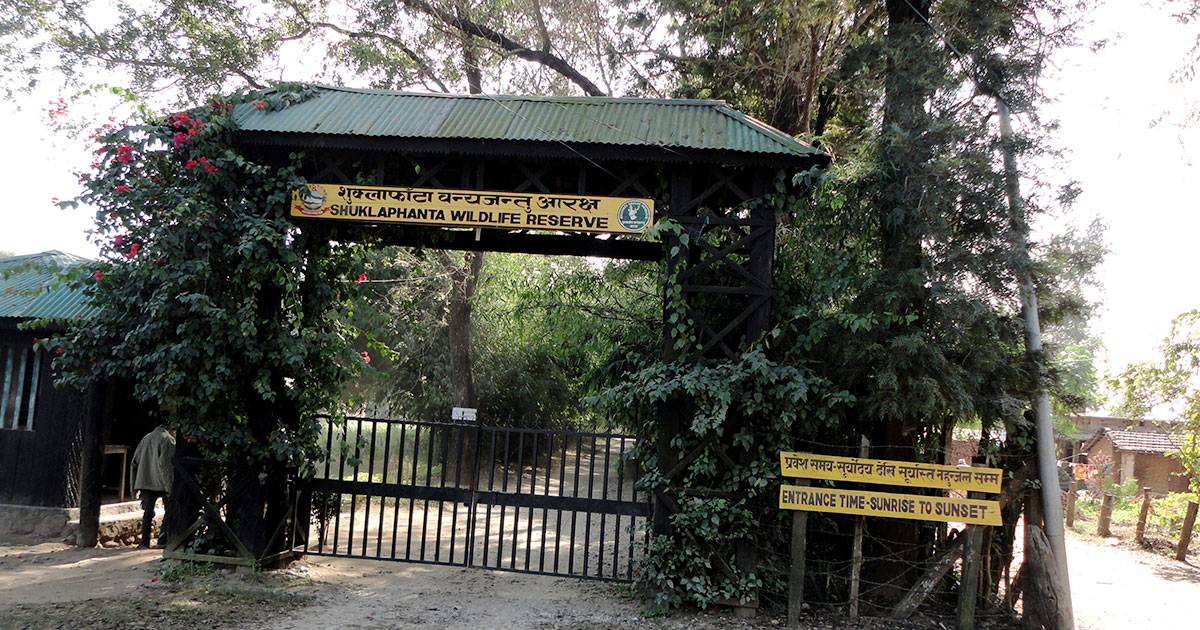
The key wildlife of this protected area includes Bengal tigers, leopards, elephants, and over 400 species of migratory birds. The park’s habitat is divided into forest, grassland, and aquatic zones, with Sissoo (Dalbergia sissoo) forests being dominant. Additionally, 30–50% of the park’s revenue is allocated to buffer zone communities for biodiversity conservation, education, and local development, ensuring sustainable tourism and wildlife protection.
Parsa National Park
Nestled in the heart of Nepal’s lowland Terai region, Parsa National Park is an underrated wildlife haven that offers an incredible blend of biodiversity, scenic landscapes, and adventure. Established as a wildlife reserve in 1984 and later upgraded to a national park in 2017, Parsa covers an area of 637.37 square kilometers, making it Nepal’s largest protected area in the Terai region. Situated in the lowlands of Terai, Parsa covers parts of Makwanpur, Bara, and Parsa districts.
The park features sal forests, riverine vegetation, and open grasslands, providing a perfect habitat for many species. Parsa National Park is home to a diverse range of flora and fauna like the Royal Bengal Tiger, Leopards, Asian Elephants, and various species of deer (spotted deer, barking deer, and sambar deer), reptiles, endangered gharial crocodiles, and various snake species, and more than birds.

About 90% of the park is covered by Sal Forest. Asna, Khair, Sissoo, and Simal are other vegetation found here. The park is famous among visitors for activities like Jungle Safari, birdwatching, nature walks, camping, and wildlife photography.
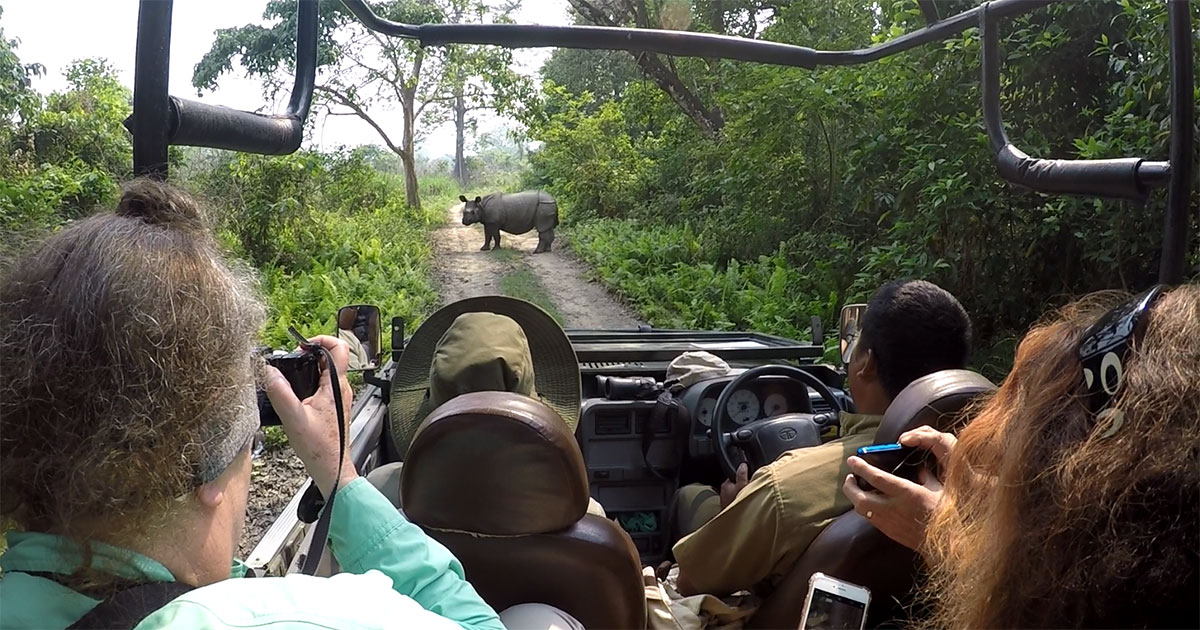
Parsa National Park offers a peaceful and less-commercialized wildlife experience, unlike the more crowded Chitwan and Bardia National Parks. It can be an ideal destination for those seeking off-the-beaten-path adventures, rich biodiversity, and a deep connection with nature.
Koshi Tappu Wildlife Reserve
Koshi Tappu Wildlife Reserve is a protected area located in the eastern Terai of Nepal, covering 176 km² (68 sq mi) across Sunsari, Saptari, and Udayapur districts. This protected area was established in 1976 and later declared as Nepal’s first Ramsar site on December 17, 1987.
It consists of extensive wetlands, grasslands, and mixed deciduous riverine forests, making it a rich habitat for diverse flora and fauna. Koshi Tappu Wildlife Reserve is home to a vast array of wildlife, including Nepal’s last remaining population of the wild water buffalo (Bubalus arnee), locally known as Arna. Other significant species include Wild Water Buffalo (Bubalus arnee), Asian Elephant (Elephas maximus), Spotted Deer, Hog Deer, Wild Boar, and Ganges River Dolphin (Platanista gangetica).
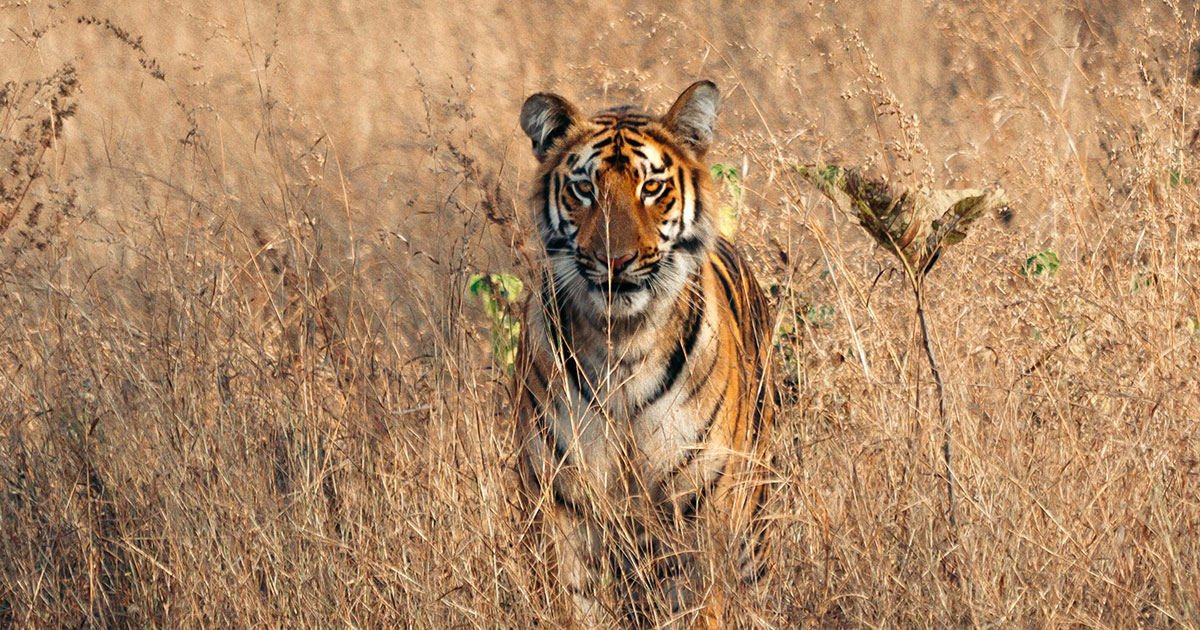
The Koshi Tappu is a birdwatcher’s paradise, hosting over 526 species of birds, including Watercock, Black-headed Cuckoo shrike, White-tailed Stonechat, Striated Grassbird, Large Adjutant Stork, and many more.
Koshi Tappu Wildlife Reserve is popular among visitors for various activities like birdwatching, wildlife safaris on the Koshi River, and wildlife photography.
The Future of Wildlife Reserves in Nepal
As conservation efforts expand, Nepal has transformed its protected areas by upgrading wildlife reserves to national parks. This shift highlights the growing recognition of Nepal’s biodiversity and the need for better protection strategies.
With only one official wildlife reserve left, Nepal continues to prioritize wildlife research, habitat protection, and sustainable tourism to safeguard its rich natural heritage. Nepal’s commitment to conservation ensures that its diverse flora and fauna remain protected for future generations, making it a model for wildlife conservation worldwide.
Book your jungle adventure to experience these wildlife sanctuaries of Nepal!
Related blog posts
Discover a choice of tourist destinations loved by most of our visitors. Whether you're on a jungle safari to spot rare animals or walking through a world heritage site, these well-planned itineraries cover the major highlights of Nepal.


